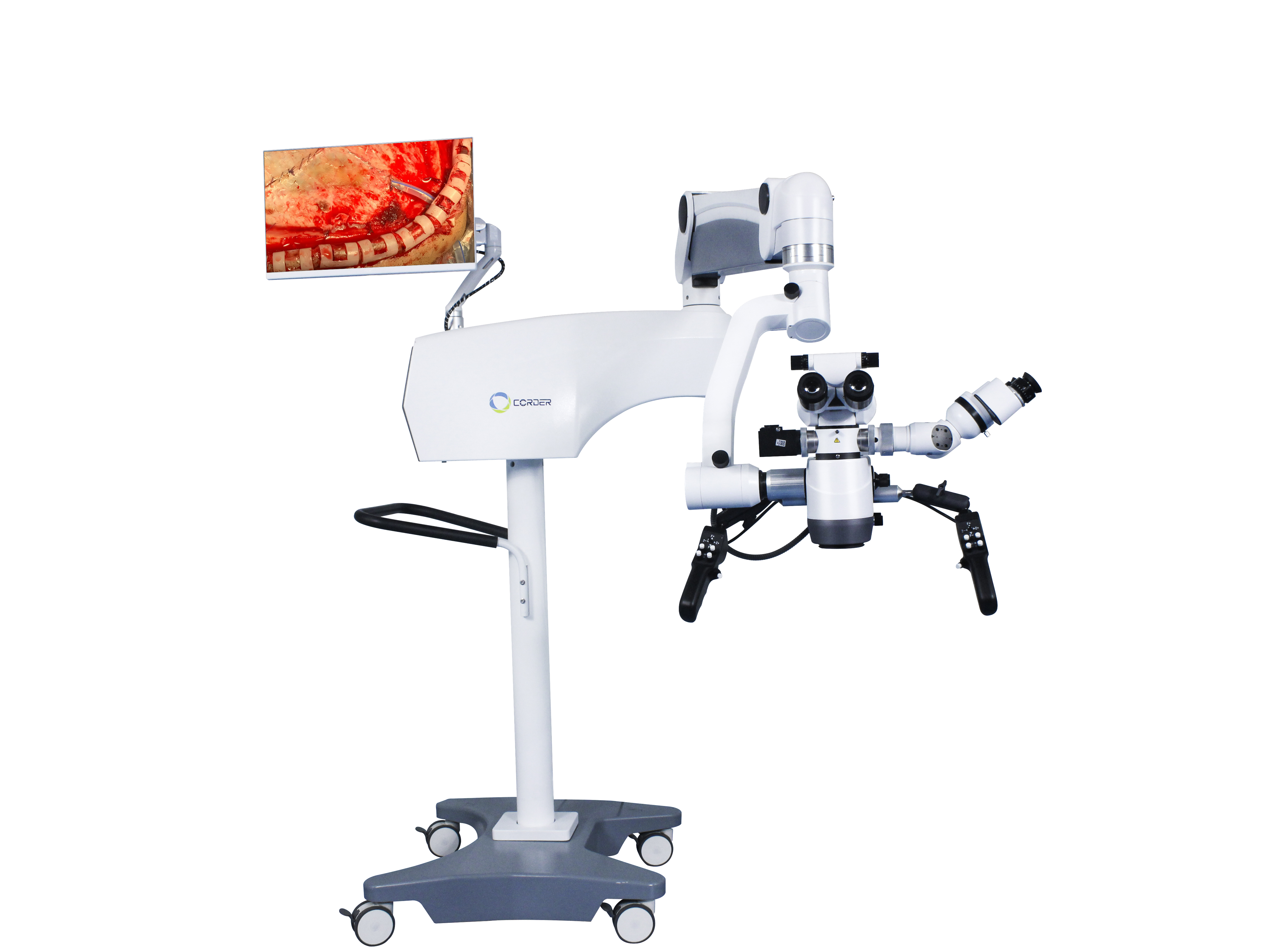Purpose of surgical microscope
Surgical microscope is a precision medical instrument that helps doctors perform accurate surgical operations at the microscopic level by providing high magnification and high-resolution images. It is widely used in various surgical fields, especially in ophthalmology, neurosurgery, orthopedics, plastic surgery, dentistry/otolaryngology, and vascular surgery. Next, I will provide a detailed introduction to the use of Operating microscopes.
Firstly, surgical microscopes play an important role in ophthalmic surgery. Ophthalmic surgery requires doctors to operate on tiny organs and tissues, while ophthalmic surgical microscopes provide highly magnified and clear views, allowing doctors to observe and manipulate tiny structures such as the eyeball, cornea, and crystalline lens. For example, in cataract surgery, doctors can use an ophthalmic operating microscope to observe and operate on the removal of the lens, thereby restoring the patient's vision. In addition, ophthalmic microscopes are also used in complex ophthalmic surgical procedures such as retinal surgery, corneal transplantation, and fundus surgery to improve the accuracy and safety of the surgery.
Secondly, surgical microscopes also play an important role in neurosurgery. Neurosurgery requires the handling of tiny neural tissues and blood vessels, and neurosurgical microscopes can allow doctors to observe these structures more clearly for accurate surgical operations. For example, in cerebral aneurysm repair surgery, doctors use a neurosurgical microscope to accurately locate, suture, and clamp the aneurysm to prevent rupture and bleeding. Neurosurgery microscopes can also be used for complex situations such as spinal cord repair, cranial tumor resection, and trigeminal neuralgia surgery in neurosurgery.
In addition, Operating microscopes also play an important role in vascular surgery. Vascular surgery requires the handling of tiny vascular structures, and Medical surgical microscopes provide a highly magnified field of view, allowing doctors to observe and manipulate these small blood vessels. For example, in heart bypass surgery, doctors can use a Medical operating microscope to observe and manipulate the tiny blood vessels of the heart for coronary artery bypass surgery. Surgical microscopes can also be used for other vascular surgeries, such as aneurysm repair, varicose vein surgery, and vascular reconstruction surgery. In addition, Operating microscopes also play an important role in other surgical procedures.
For example, in plastic surgery, Plastic surgery microscopes can be used for skin transplantation, tissue reconstruction, and minor surgical repairs. In otolaryngology surgery, EMT surgical microscopes can be used for minor surgeries in the nasal cavity, ear canal, and throat. In oral and maxillofacial surgery, dental operating microscopes can be used for surgical procedures such as oral tumor resection and jawbone reconstruction.
It can be said that Medical surgical microscopes play an important role in ophthalmology, neurosurgery, vascular surgery, and other surgical procedures. By providing highly magnified and high-resolution images, Operating microscopes can assist doctors in performing accurate and safe surgical procedures at the microscopic level. And with the advancement of technology, the functionality and performance of surgical microscopes will be further improved, providing doctors with a better operating experience and better surgical results.

Post time: Nov-07-2024







